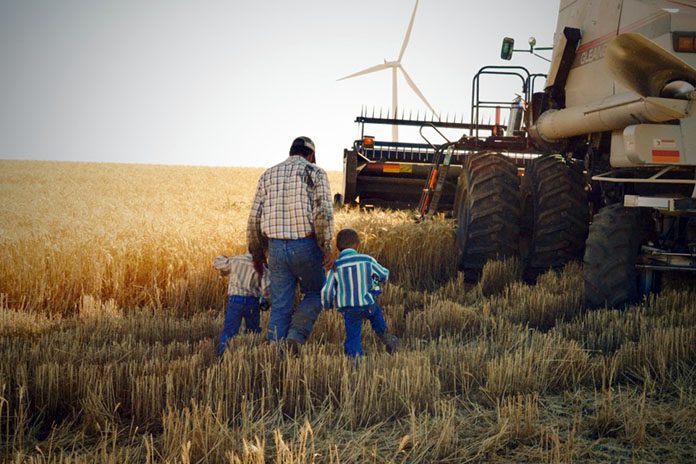
From protecting agricultural lands using easements and covenants, to helping farmers and ranchers keep their operation in the family through succession planning, the newly formed Oregon Agricultural Heritage Program and its soon-to-be formed commission offer hope that working lands stay in production while providing conservation benefits.
At its core, the new program incentivizes farmers and ranchers to support voluntary practices that are good for agriculture and the state’s natural resources.
“Farm and ranch lands in Oregon supply high quality food and fiber along with habitat for fish and wildlife.” said Meta Loftsgaarden, Executive Director of the Oregon Watershed Enhancement Board (OWEB). “By providing agricultural landowners with voluntary tools to steward their land and pass it on to the next generation, the Oregon Agricultural Heritage Program will help strengthen our ag communities and safeguard the fish and wildlife habitats that depend upon Oregon’s agricultural land.”
Established by the 2017 State Legislature, the Oregon Agricultural Heritage Program offers two highlights, according to Oregon Department of Agriculture’s land use specialist, Jim Johnson.
“It allows for the state to get more involved in the use of agricultural conservation easements to protect agricultural land in a way that complements our land use planning program – keeping agricultural land in agricultural use,” says Johnson. “It also focuses on helping farmers with succession planning.”
With oversight from the commission, the Oregon Agricultural Heritage Program will offer a number of tools that help keep working ag and forest lands and the natural resources they support from disappearing, ultimately assisting conservation efforts.
“I can’t think of a better use of land to protect fish and wildlife than farming and ranching,” says Johnson. “Without that farm use protection, other land uses would take hold, including development, that probably won’t complement fish and wildlife habitat the way farm and forest lands do.”
A conservation easement is a voluntary, legal agreement between a landowner and a land trust or government agency which permanently limits the use of that land to protect its conservation values. The landowner is compensated with cash and/or tax benefits in exchange for conserving the land. Agricultural conservation easements are easements that allow the protected land to be used for agriculture. Again, most holders of an easement are usually a land trust or government agency.
“Easements protect a family’s legacy and they can make the land available for farm use for future generations, helping with land succession,” says Johnson. “Easements are great complements to the existing land use planning program. And, of course, they can help protect restoration efforts. If you want to make sure those restoration efforts remain in place for a long time, an easement can help.”
Applications for the Oregon Agricultural Heritage Commission are to be submitted to OWEB which will then forward them to the appropriate recommending entity. Information on applying can be found on OWEB’s Oregon Agricultural Heritage Program website.
Issues related to loss of farmland and effective conservation programs are likely different in the various geographic regions of the state. But there is one common desire that surfaces with the Oregon Agricultural Heritage Program– keeping farm and ranch lands in production and managing them in a manner that supports fish and wildlife habitat as well as enhancing other natural resources.
For more information, contact Nellie McAdams (OWEB) at (503) 986-0061 or Jim Johnson (ODA) at (503) 986-4706.









Isn’t this part and parcel for the insertion of the UN’s Agenda 21 or 2030 or whatever it’s latest reinvention is called? I have the “Growing Smart Legislative Guidebook” that will outline this but at about 1000 pages I don’t feel like looking it up especially since this as outlined looks just like it.
This looks like a state program, not an international one. Is there a better way to protect our farm lands from purchased by corporate owners from all over the world, including Wall St.?
Comments are closed.